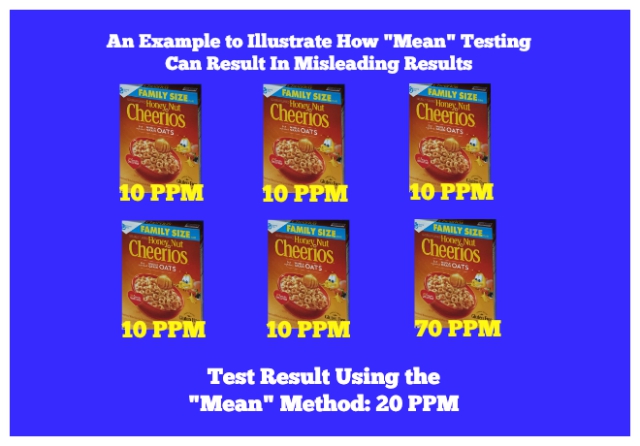I was recently at the grocery store and noticed the honey-nut cheerios in a sale display said "gluten-free" on the box.
In a haze of excitement (I haven't eaten cheerios for approx 10 years and they were a staple of my chidhood) and store-sensory-environment-induced fuzzy-headed-ness, I didn't think to look for any info about who had certified them as gluten-free and just bought them. (This is very unusual for me; Normally I read labels carefully and look for information about certification for claims like "gluten-free"....I've even done research about the standards and testing/inspection protocols different certifying bodies and companies/brands use.)
I thought about the certification today.....and found out that there isn't any.
General Mills does their own testing and the testing method they use seems extremely unreliable for determining the level of gluten in each box -- lot mean testing. Here is a description of the testing process from Gluten Free Watchdog's Updated Position Statement On Gluten-Free Cheerios.:
"General Mills defines a “lot” as a 24-hour production cycle. To arrive at a lot mean, the following protocol is followed:
 .
.
(The maximum level of gluten-contamination considered "safe" for people with celiac disease and non-celiac gluten sensitivity is 20ppm.)
General Mills continues to state that "every serving" of cheerios contains less than 20ppm of gluten.... but most people don't buy 12 to 18 boxes of cheerios, then grind all the cheerios from all the boxes into a flour and mix the flour together before eating a serving. (And is 12 to 18 boxes a proper sample size when something like 180,000 boxes of cheerios can be produced at a single factory in a day? Maybe it is, I don't know....it just seems small to me -- 18 out of 180,000 boxes is 0.01%.....By the way, the number 180,000 comes from a 2015 recall of 1.8 million boxes of gluten-free cheerios produced at a single factory over a period of 2 weeks.....# of boxes / # working days = 1.8 million boxes / 10 days = 180,000 boxes / day)
In a haze of excitement (I haven't eaten cheerios for approx 10 years and they were a staple of my chidhood) and store-sensory-environment-induced fuzzy-headed-ness, I didn't think to look for any info about who had certified them as gluten-free and just bought them. (This is very unusual for me; Normally I read labels carefully and look for information about certification for claims like "gluten-free"....I've even done research about the standards and testing/inspection protocols different certifying bodies and companies/brands use.)
I thought about the certification today.....and found out that there isn't any.
General Mills does their own testing and the testing method they use seems extremely unreliable for determining the level of gluten in each box -- lot mean testing. Here is a description of the testing process from Gluten Free Watchdog's Updated Position Statement On Gluten-Free Cheerios.:
"General Mills defines a “lot” as a 24-hour production cycle. To arrive at a lot mean, the following protocol is followed:
- Twelve to eighteen boxes of cereal are pulled during a production cycle
- The contents of each individual box are ground
- A sub-sample of ground product is taken from each box
- The sub-samples are composited—meaning they are combined
- The combined sub-samples are subject to additional grinding
- Twelve extractions are taken from this combined, ground sample
- Extractions are tested using the Ridascreen Fast Gliadin (R7002) and cocktail extraction solution"

(The maximum level of gluten-contamination considered "safe" for people with celiac disease and non-celiac gluten sensitivity is 20ppm.)
General Mills continues to state that "every serving" of cheerios contains less than 20ppm of gluten.... but most people don't buy 12 to 18 boxes of cheerios, then grind all the cheerios from all the boxes into a flour and mix the flour together before eating a serving. (And is 12 to 18 boxes a proper sample size when something like 180,000 boxes of cheerios can be produced at a single factory in a day? Maybe it is, I don't know....it just seems small to me -- 18 out of 180,000 boxes is 0.01%.....By the way, the number 180,000 comes from a 2015 recall of 1.8 million boxes of gluten-free cheerios produced at a single factory over a period of 2 weeks.....# of boxes / # working days = 1.8 million boxes / 10 days = 180,000 boxes / day)

